I don’t mean BETTER. That’s a different conversation. I mean cooler.
An old CRT display was literally a small scale particle accelerator, firing angry electron beams at light speed towards the viewers, bent by an electromagnet that alternates at an ultra high frequency, stopped by a rounded rectangle of glowing phosphors.
If a CRT goes bad it can actually make people sick.
That’s just. Conceptually a lot COOLER than a modern LED panel, which really is just a bajillion very tiny lightbulbs.
I could mention toasters or pinball machines or flickering light bulbs or unusual people movers, but instead I’ll save some time and just link the whole obligatory channel: https://www.youtube.com/@TechnologyConnections
Technology connections is the gent that inspired this thread. Was watching one of his videos about old camera flashes (LITERALLY TINY FLASHBANG GRENADES. WE USED TO USE FUCKING BOMBS TO TAKE PHOTOS IN THE DARK HOW FUCKING COOL IS THAT???) and figured “huh… There are a lot of old inventions that might suck to use but are conceptually really cool, aren’t there?”
Fun fact, he’s in the fediverse! He’s @[email protected] over on mastodon.
LED panel, which really is just a bajillion very tiny lightbulbs.
It is not, but for the sake of the argument it’s ok.
The phones with the internal hidden camera, I was sure it would be the future
https://www.91mobiles.com/list-of-phones/pop-up-camera-phones
Video games. Way back then there was imagination involved, and companies took risks. Nowadays every game seems to iterate on the same tired formula. The only recent entry I can think of that bucked this trend in the past few decades was maybe Portal, but there have been few to no other recent games that come to mind. Fight me.
The imagination came from the limitations of the hardware.
Computers today are too powerful for gaming. Its resulted all the famous studios racing to the bottom with graphics their primary and generally only concern, and everything else coming a distant second.
But at least it left the door open for indie devs, whose lack of resources and experience are still capable of keeping that ember of imagination and innovation burning.
What is the formula you’re talking about? Games are so diverse it’s pretty hard to see what single formula there could be that covers them all.
You’re talking about the AAA space. Fuck those games. Play indies. There are so many creators carrying out the legacy of game development you’re talking about. Don’t buy the games directed by suits. Currently I’m playing Factorio: Space Age, which is great. I recently played Lorelie and the Laser Eyes, which is a really cool puzzle game where you’re actually going to want to write notes on paper, which feels very classic. There are so many out there, but you actually have to look because the don’t have the marketing budget of Ubisoft or EA.
Literally play any indie game.
If you’re only talking about AAA games, sure.
Along with the others I’d also mention Outer Wilds and Viewfinder
Not a fan of indie games are you?
Baba is you, is a pretty original puzzle game. I’m not really into factorio, but it made tower defense cool again. There’s lots more that are weird and interesting like brigadore, airships conquer the skies, cruelty squad, superliminal.
As far as I remember, portal was a mod or indie game that valve picked up because they thought the idea was really good. It was really good.
A student project, actually. Valve saw a college student doing fun/weird shit inside their engine and went “You’re hired”.
That only makes it cooler
Alan Wake 2 and Control are fantastic!
Cell phones, when they had personality. The 2000s was such a good time for them, you had so many designs. Slide out keyboard, panels that can slide, sleek designs, some had actual buttons .etc
But we’re now relegated to just a varying series of rectangles and squares. Yay…
Pictures under glass: literally the only affordance anyone has now for device interaction
I got one that slid up to reveal the keyboard after watching The Matrix, and I thought it was the coolest phone ever. I still have it, and I still think it is pretty cool.
Edit: it’s not an actual keyboard though, it’s a phone keypad for dialing or sending texts with t9 input.
It was the Samsung A737.
It looks like this closed
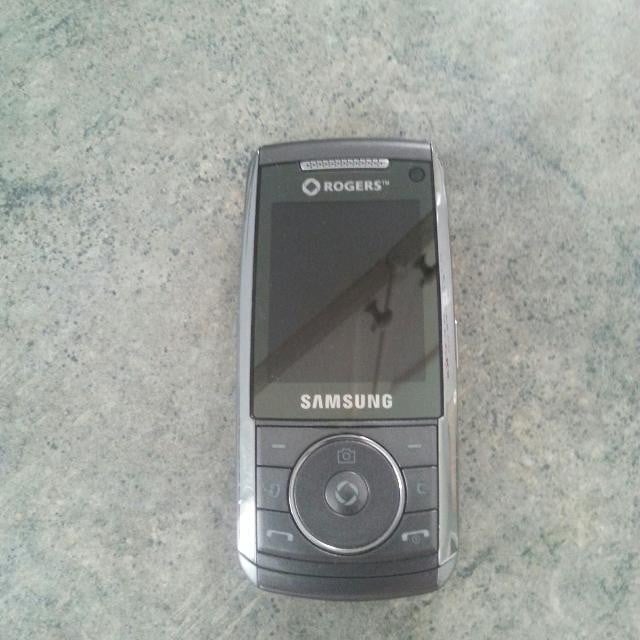
And here it is open
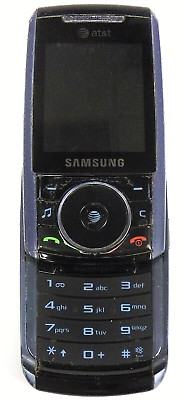
I fell in love with slide phones after watching Densha Otoko!
I still have my Sony Eriksson W580i, also thought it was the coolest thing.

Still works and holds a charge, pulled photos off of the memory card recently, cameras have gotten a lot better… Had the red one, have had some very brightly colored phones, my favourite being the bright yellow Nokia Lumia 1020

Had an amazing camera on it.I think my favourite thing about those old Lumias was the dedicated camera shutter. The 1020 even had a battery grip case so you could hold it more like a digital camera.
Those are cool phones too, especially the red one! Yeah, the old digital cameras used to be junk. I have some old digital photos that look like they were taken on a potato.
When the Vengabus has poorly shielded speakers.
Mine folds in half, so that’s kinda cool
Micheal Fisher’s kbin account.
I love that about CRTs, man.
How the fuck could we invent a tiny pocket sized particle accelerator electron beam gun that magnetically aimed its fire with such precision as to hit every individual phosphor, with the appropriate charge to make the right color, across an entire fucking screen, and do that 30+ times a second (for TV, or 60+ for a monitor)…
Yet the LCD is the high tech fancy monitor when its just a little grid of globs being electronically fired? How did the CRT get invented before the LCD?!
Turns out manufacturing individual, low-power-draw, micron-sized lights is not easy. Even if it’s conceptually not as cool, it requires much better manufacturing processes and materials.
LCD isn’t LED.
But, confusingly, an LED TV is an LCD TV. An LED TV is just an LCD TV that uses an LED array for the backlight instead of florescent lights. Quantum dot or QLED displays are also just LCDs with a fancy backlight. OLED displays are the ones that actually have glowing subpixels.
Neither sure how to call it, nor is it a technology, more like a mindset. I am just gonna name it: “Prideful Craftsmanship”
Basically the incorporation of “useless” decorations and embellishments, to show off ones skill and maybe market oneself a little. Definitely superseded in the capitalist world. Things were just prettier or more interesting to look at, even stuff that wasn’t meant to be flashy.
But with nearly everything being made to a price point, this practice has been somewhat lost.
You’ve set off something in the woodworker’s side of my brain.
There’s a style of furniture called Arts & Crafts. The Arts & Crafts movement was bigger than furniture, but in the furniture world there was kind of a clap back at both ostentatious Victorian furniture a la Chippendale, and the mass produced crap the industurial revolution brought forth. So a style of well built, hand made furniture arose. The joinery was often exposed and in fact celebrated as features of the piece; through tenons would stand out proud, pinned joints would be done in contrasting wood exposed on the face side of the piece. I’ve heard it described as “in your face joinery.” The intention is to say “Look at this table. This table was not manufactured in a factory, it was built in a workshop. Look. At. It.” In the United States this movement often went for an aesthetic reminiscent of the furniture and fittings of old Spanish missions, so over here we often call it Mission furniture.
Compare this to the shaker style of furniture. The shakers were a sect of Christianity who were so celibate that men and women were required to use separate staircases, which is why this paragraph is largely written in the past tense. They led very modest lives in communal villages, and were known for their simple and yet extremely well made wooden furniture. A shaker table is the universal prototype table. It has legs, a top, and whatever apron or other structure is required to hold it together. Decoration was often limited to choosing pleasing proportions and maybe tapering the legs. I think a shaker craftsman would see the exposed joinery of the Mission style as sinfully prideful.
Interchangeable automotive/bicycle parts.
Or for that matter, interchangeable anything parts.
Both cooler and better at the same time. Interchangeable parts made it easier to both customize and repair your own stuff…
I love that Replaceable Parts is a technology you can research in Civilization. The first time I saw it I thought it was kinda stupid until I thought “Oh wait, does that mean that there was a time when replacement parts just wasn’t a thing?”
The concept of having interchangeable, standardized parts is actually kind of a new idea from the Industrial Revolution. Before then, everything was custom-made to fit. The example that comes to mind is firearms. All of the muskets and rifles used in the revolutionary war, for example, were hand-made and hand-fitted. The lock from one rifle wouldn’t necessarily fit on another. If your stock broke, you couldn’t just go get a new stock and slap it on - you had to bust out the woodworking tools and make a new one.
Used to be where Mongoose, Huffy, Schwinn, etc bearings and stuff were interchangeable. Used to be where NVidia GPUs could run in an AMD motherboard. I happen to own older things on both ends of that compatible spectrum.
Used to be where an Idle Air Control Valve from a Chevy would fit an Isuzu…
Used to be where NVidia GPUs could run in an AMD motherboard.
They still can.
Oof, wait. I mean when AMD processors were actually compatible with nVidia motherboards.
A8N-SLI Deluxe
But that’s not a thing for intel CPUs either, at least not anymore.
I’m not sure why, but Nvidia hasn’t been making chipsets/motherboard sfor quite a while. Or was there a point in time when it only made chipsets for intel CPUs?
Probably not as well as used to be though.
No, they work fine.
Being able to build something with off the shelf parts is an art.
Used to be where NVidia GPUs could run in an AMD motherboard. I happen to own older things on both ends of that compatible spectrum.
I don’t know what you mean by that. The protocol for communication of computer parts is open source. Desktop computers are a great example of interchangeable parts. An Nvidia GPU that can’t run in an AMD motherboard is either not from the same era (so an equivalent AMD GPU wouldn’t work either) or a different form factor (e.g. trying to plug a laptop GPU on a Desktop)
The protocol of communication of computer parts is open source? Since when?
What the fuck is USB? And why is that proprietary?
Regardless, AMD vs nVidia might work together, but not optimally these days.
The protocol of communication of computer parts is open source? Since when?
Since forever, which protocol do you think it’s not? For a few examples here’s PCI and DDR5
What the fuck is USB? And why is that proprietary?
USB is a standardized connector, with again an open source protocol. Here’s the specification in case you’re interested https://www.usb.org/document-library/usb-20-specification
Regardless, AMD vs nVidia might work together, but not optimally these days.
I would need a source for that, I’ve had AMD +Nvidia up until very recently and it worked as expected.
USB is absolutely not a standardized connector, otherwise it would only be one type of connector, not the dozen or so they’ve made over the decades. There’s nothing universal about it.
And if it was open source, then why doesn’t VirtualBox release the source code for their USB extension package?
USB is absolutely not a standardized connector,
USB is absolutely standardized, I even sent you the 2.0 spec, you can get the spec for the other versions on the same website.
otherwise it would only be one type of connector, not the dozen or so they’ve made over the decades.
Different versions/connectors have different specs, all of them open, otherwise different manufacturers wouldn’t be able to create devices that use it.
There’s nothing universal about it.
That’s ridiculous, first of all the name relates to the fact that it can be used for any data transfer as long as it’s serial. Secondly the sheer amount of different devices from different manufacturers that can be plugged via USB should give you a hint of just how universal and open the standard is.
And if it was open source, then why doesn’t VirtualBox release the source code for their USB extension package?
The standard is open, implementations of it are not, it’s like OpenGL or Vulkan.
Regardless, AMD vs nVidia might work together, but not optimally these days.
And yet most of the time in the past 2 year the best choice for a gaming PC would be a 3D cache Ryzen with an Nvidia GPU. Is there something particular you have in mind that supposedly doesn’t work with an AMD chipset and an Nvidia GPU?
PCI-Express is not an open standard but both AMD and Nvidia are members and it’s what both use for their GPUs and AMD for it’s chipsets (as well as Intel). It’s certainly not a secret cabal.
It’s all in the same family, literally…
https://www.cnn.com/2023/11/05/tech/nvidia-amd-ceos-taiwan-intl-hnk/index.html
This supports your claim of AMD vs Nvidia not working optimally together how?
I like the look of vacuum-fluorescent displays (VFDs) – a high-contrast display with a black background, solid color areas. Enough brightness to cause some haloing spilling over into the blackness if you were looking at it. Led to a particular design style adapted to the technology, was very “high-tech” in maybe the 1980s.
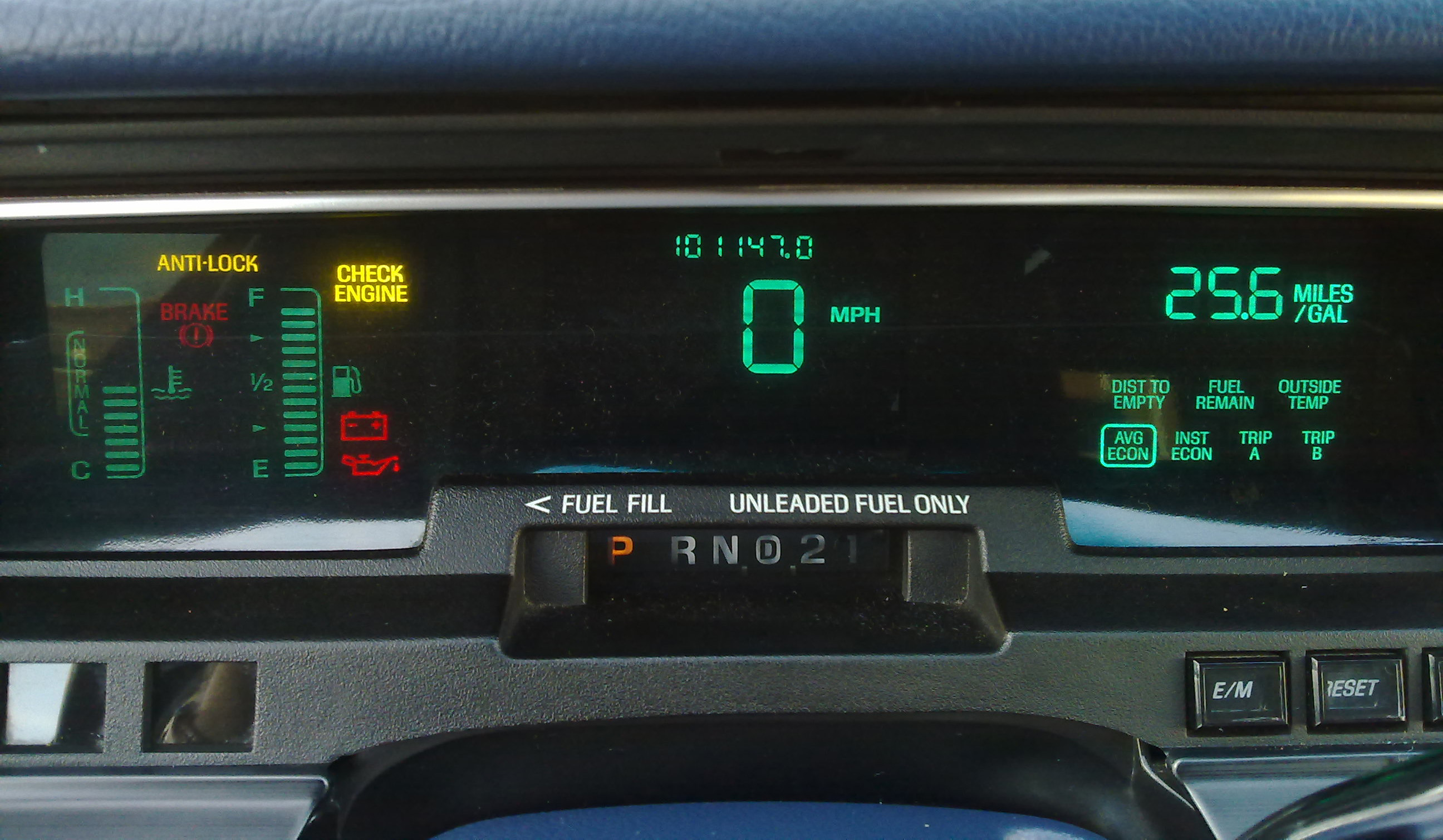
OLEDs have high contrast, and I suppose you could probably replicate the look, but I doubt that the style will come back.
Many receivers and amplifiers still have VFD displays to this day. I still wonder why, LCD has to be significantly cheaper.
They look cool as hell though, so I appreciate that they go the extra step.
As someone who also likes VFDs, I’ve fully expected that they’d be extinct in new products by now thanks to cheap LCDs and OLED. But I find it awesome that they’re still hanging in there.
Newer, but I quite like the gentle amber LCD (not LED) displays of my car. At night it’s bright enough and sharp enough without being visually loud. I wish more of these displays were still being made, I’d love to use them in car-centric Arduino projects and data displays that would be consulted at night or that sort of thing.
I always ask my friends “How the fuck do you live like this?” when I hop into a car and the music UI is a garish color searing itself into my retinas permanently.
Thankfully, advertising companies have identified this marginal comfort I find in the warm interior lighting of my car and have proceeded to mount insultingly blinding screens all over the city.
The city being the midrise urban sprawl north of Beirut. What do you mean regulations on brightness habibi? You think you live in Paris? Imagine this: half the street is unlit because the power is out, but the advertising company’s invasive bullshit budget™ has enough foreign cash to burn to keep generators running all night for these shitty ads. Gotta beam an extra few kilowatts of photons straight into this sleepy driver’s eyeballs while they operate a motor vehicle, on a highway that a lot of people cross by foot. There’s a special on fish at the fancy supermarket, how will I live without that knowledge?
Thankfully, the “state” of Israel has identified that the civilian structures of Lebanon mildly inconvenienced me, and has proceeded toNewer, but I quite like the gentle amber LCD (not LED) displays of my car. At night it’s bright enough and sharp enough without being visually loud. I wish more of these displays were still being made, I’d love to use them in car-centric Arduino projects and data displays that would be consulted at night or that sort of thing.
Not sure if you mean VFDs or amber LCDs, but Matrix Orbital sells both sorts in small quantities that you’d use in a project and can interface to a microcontroller – I was interested in them myself when looking for small VFDs, years back. They’re going to be seven-segment or grid displays, though, not things with physical custom display elements like those car dash things, but that’s kinda part and parcel of small-run stuff.
https://www.matrixorbital.com/
https://www.matrixorbital.com/blc2021
Just choose the “amber” option if it’s an amber LCD you want.
Can also get their displays via Mouser or Digikey.
That’s exactly the kind of display I’m talking about. Nice to see they’re still around.
The ones I have are all just grids, higher resolution than these but still comfortingly blocky. I’ve actually replaced the dash display recently since the original one got deep fried under the sun and lost all contrast when the weather was above 20°C.
Ah, good to hear it. They do (or did, and I assume still do) also have higher res displays.
Going back to an earlier bit in the conversation, where you were concerned about light sources in the car, I think that auto-dimming might also help (not just with VFDs, but the brightness of any in-car display). My car dash has the option to automatically set brightness based on ambient light levels (something that I wish my desktop computer monitor could do…part of “dark mode”'s benefit is a mitigation for devices that don’t do this). I don’t know if that was a thing back in the 1980s or so, when these display designs were popular.
I also kind of wonder if eye-tracking, which has come a long way, could be made reliable-enough and responsive-enough to toggle off displays if the car can detect that a user is looking somewhere away from them. Maybe be conservative, not with some critical displays, but stuff like the radio or clock or something. Eye tracking systems normally use the near-infrared, as I understand it, not visible light, so I’d think that you could theoretically do it in a darkened car without problems.
VFDs are the shit!
As a kid, I had this tabletop video game called “Dracula” that featured a multicolor VFD display. I loved that game.

My kid’s car is like this. I’ve been calling it retro-futuristic, which I think is a pretty apt description.
Oh what kind of car? I’d love for this style to come back for a bit.
Suzuki Aerio SX. I can’t find a picture that shows the whole dash, but here’s part of it:
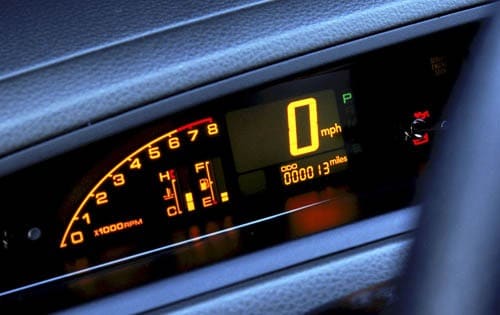
I MISS CLEAR COMPUTERS >:(
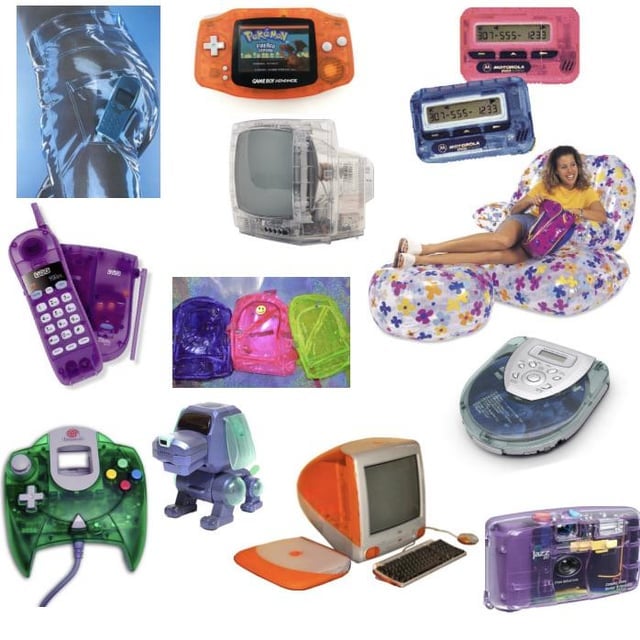
I mean LOOK AT IT it’s so much cooler than just a box!
The SteamDeck community has been cooking with some clear cases which I would buy if I didn’t have to risk breaking my beloved $500 indie machine.
I remember the clear telephone in my friend’s dorm room. He called it Pavlov because he had to respond to it when the bell rang.
YEYEYEYEYEYEYE
One of my dream projects would be to get a dead iMac G3 and make a modern-day sleeper build inside it. It was honestly the COOLEST a computer has EVER looked.
I bought the translucent nitro purple back plate. Very easy to install.
I miss plastic electronics. Oddly enough glass and metal feel more fragile.
HTC knew what was up with the HTC One series. Their polycarbonate bodies felt Nintendo 64 controller levels of durable.
I’ve got a drawer that has a stack of my old phones and devices in it. Among them is the CD MP3 player I’ve had since high school. It’s 24 years old, made entirely of plastic, it followed me all the way through high school and part of the way through college, and it’s in perfect working condition and bears only light scuffs. It might be my midlife crisis coming on but I’m tempted to start using the thing again instead of my smart phone. My PC tower has a 5 1/4" bay, I’m tempted to install an optical drive in it.
YOOOOO that purple one! I wonder how hard it would be to do this to mine… time to add this to the Christmas list lol
If you go to a United States prison, all of the electronics are clear!
The internet?
Web 1.0 and even before was way cooler than this corpo bullshit web we have now.
Automatic watches and grandfather clocks. The way they kept track of time using only mechanical principles is crazy. How does my automatic watch recharge itself using only the movement from wearing it and keep accurate track of time. Grandfather clocks are cool because they’re so power efficient.
They are very cool indeed. And the fact that you can have a century old watch on your wrist and it’s just as useful as a modern one. In fact I’m wearing a watch from the 50s right now!
These huge mechanical clocks in church towers.
St Marks in Venice has a “digital display”

Wild!
I did not know digital had been added to any tower-clocks.
Also, waving a magnet around a crt was fun.
Great way to not have a crt anymore.
Not in my experience. You use a degaussing tool (which is an electromagnet) on crts when the picture gets all “wonky” (technical term).
Nah, that didn’t harm it.
Yes!
Also, the static on the screen. I don’t mean snow, but the actual static that raised your arm hairs. Whenever my parents needed to leave a note for us, they’d just stick the paper to the TV screen and it would stay there because of the static.
A bunch of tiny lightbulbs that use twisted light and quantum mechanics to turn on or off.

















